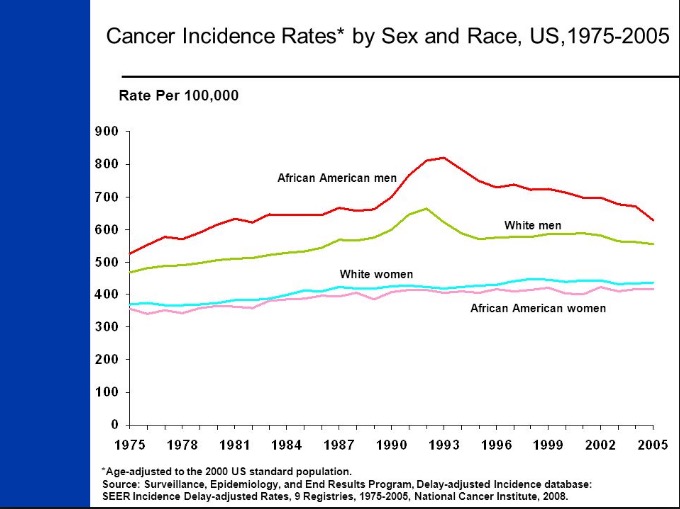Sometimes my job is just too easy. This is one of those times.
Even though I continuously call out the Environmental Working Group (EWG) for its use of underhanded chemical fear tactics, I am nothing if not polite. Ask my mother. (Uh, never mind. Bad idea.)
So I need to thank the group for putting its fundraising letter on a batting tee for me. EWG just made my life a little easier by publishing what is essentially the "Cliff Notes" of phony chemical scares. Unfortunately, despite my best efforts, the letter will probably work, since groups like EWG and NRDC are masters of keeping the loot rolling in by making sure that people are perpetually scared. Nice gig.
Let's take a look at what EWG is putting out there in an attempt to scare people into donating to them, thus ensuring that the group will be well funded until such a time when no chemicals remain anywhere on earth.
1. The letter starts out with a big fat lie:
Erin Brockovich was a good movie, but so was Star Wars. Both movies are science fiction, however, at least most people knew that Star Wars was supposed to be science fiction. Yet, at the same time, they sat breathlessly on the edge of their seats watching Julia Roberts fight against all odds to expose the deadly cancer cluster in Hinkley, California. You know—the one that was caused by chromium (1). At the end of the movie, Julia/Erin wins a bazillion dollars from the Pacific Gas & Electric Company, and life is good again.
Except it's a load of crap. Ten years after the movie, a study showed that the cancer rate in Hinkley was actually lower than expected (although not statistically significant) during that time (1996-2008). Based on the study alone, a more "accurate" title would have been "Chromium-6 in drinking water prevents cancer." Of course, this is nonsense, but no more so than the movie or the EWG claim.
If you're looking for proof, here it is - the conclusion of a report named "Preliminary Assessment of Cancer Occurrence in the Hinkley Census Tract, 1996-2008," which compared cancer rates in Hinkley with those of other areas.

Source: Preliminary Assessment of Cancer Occurrence in the Hinkley Census Tract, 1996-2008
(Don't get me wrong. Waste chemicals should not be dumped anywhere. Any organic chemist knows the proper way to dispose of chemical waste. It must be handled properly and legally. The EPA website discusses how this is done. Also, keep in mind that almost all of the instances of improper disposal of chemical waste took place before regulations were put in place to ensure proper disposal. For example, the General Electric dumped PCBs into the Hudson River for 30 years beginning in the 1940s. The company neither could or would have done this today.)
Let's toss this one away. It is nonsense.
2. An overstated risk—Dioxane

Well, this strikes me as fishy language. What do the numbers really mean? How bad is 1,4-dioxane? (1) How high are the concentrations in tap water, how minimal is the minimal cancer risk? As you might expect, it's not nearly as scary as the EWG portrays it.
The chemical is water soluble, which is why it is found in ground water in low concentrations. It has been used forever in a wide variety of products, usually as a solvent. These uses include making paper, textiles, and cotton, as a solvent for pesticides, and is also found in small quantities in cleaning products, cosmetics and in automobile engine coolants. But is it a real risk? No- not at the levels to which we are exposed. Here's why:
- Dioxane is very rapidly metabolized in humans, with a half-life of about one hour. Six hours after human volunteers were exposed to dioxane at a concentration in air of 50 ppm, it was undetectable. A chemical with such a short half-life cannot bioaccumulate. The half-life of dioxane when ingested is also very short.
- This rapid metabolism is also seen in rats, except at high chronic doses, where the metabolism of the chemical is saturated. It is only at these high doses that toxicity begins to show up.
- Cancer in rats is observed, but only at very high doses over the life of the rat. 38/50 male rats and 48/50 females developed cancer, but only when they drank water to which 5,000 mg (5 g) of dioxane per liter was added, for their entire lives—a ridiculously high dose. By contrast, the EPA recommends that children should not drink tap water that contains 0.4 mg of dioxane per liter for more than 10 days— a dose that is 12,500-times less than was fed to rats over the course of their entire lives.
- Data about the development of cancer from human exposure to the chemical are unimpressive (to say the least). A total of 165 workers were exposed to dioxane at the Texas factory where the chemical was manufactured between 1954-1975. Of these workers, seven died, two from cancer. The expected mortality, based on historical rates from Texas would be 4.9 deaths, 0.9 of which coming from cancer. There is no real difference in these numbers.
- The EWG uses the term "minimal cancer risk." Based on the human and rat experiments minimal is really minimal. In fact, it is not unreasonable to call the risk from trace amounts of dioxane in ground water ZERO. This is because, as shown in rats, that toxicity only shows up when dioxane is given in doses that are high enough to overload the body's capacity to metabolize it - more than 10,000-times the amount that we might be exposed to.
"The acute effects described in this document are not likely to occur at concentrations of 1,4-dioxane that are normally found in the U.S. environment...[and] the current threshold limit value of 50 ppm dioxane in the workplace will not cause adverse effects, even when the exposure is on a continuous or repeated basis."
Source: Journal of Toxicology and Environmental Health
The EWG seems to want you to give them money so that they can warn you when harmless amounts of dioxane are present in water. Not such a great deal. Except for them.
3. Protection from Mother Nature
EWG saves a real doozie for last. You send them money and they will warn you about tiny amounts of arsenic that are in your water. But even the best con men have their limits. There is no way that even EWG could maintain that the arsenic in ground water was put there by Monsanto, the pharmaceutical industry, or the Koch brothers. It has been there forever, along with other minerals like iron, calcium, and manganese.
Wow! Eighty million people! Cancer rates must be skyrocketing, right? Or not.
Not. Cancer incidence (the number of cases occurring in a given time) has remained steady since 1975. (The only outlier is prostate cancer in men, which has "increased" only because it is detected more often because of the PSA test (1993)—not because the amount of disease is higher.)

Age-adjusted cancer incidence 1975-2005 (Source: National Cancer Institute). No - cancer rates are not skyrocketing. They have been virtually unchanged for three decades.
The fact that arsenic is in water is something that people who get water from wells are probably already well aware of. Wells can be tested, and there are a number of ways to remove the arsenic. So, here are your choices:
- Get your well tested
- Give money to EWG so they can test someone else's well.
- If you still feel compelled to dispose of money, here's a better option:

Just don't forget to flush.
Notes:
(1) What I'm calling "chromium" for simplicity is chemically Cr+6 aka hexavalent chromium
(2) 1,4-Dioxane is undoubtedly scarier to many people than it ought to be. This is because of the similarity of the name to "dioxin," which is short for 2,3,7,8-tetrachlorodibenzodioxin, or 2,3,7,8-TCDD, the toxic chemical in Agent Orange. Aside from the spelling, the two are completely unrelated.




